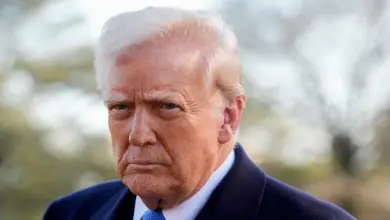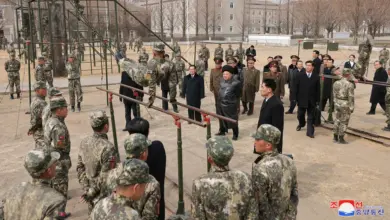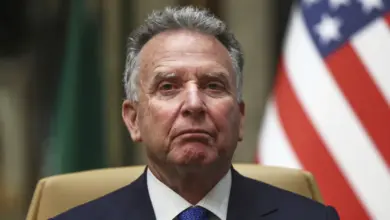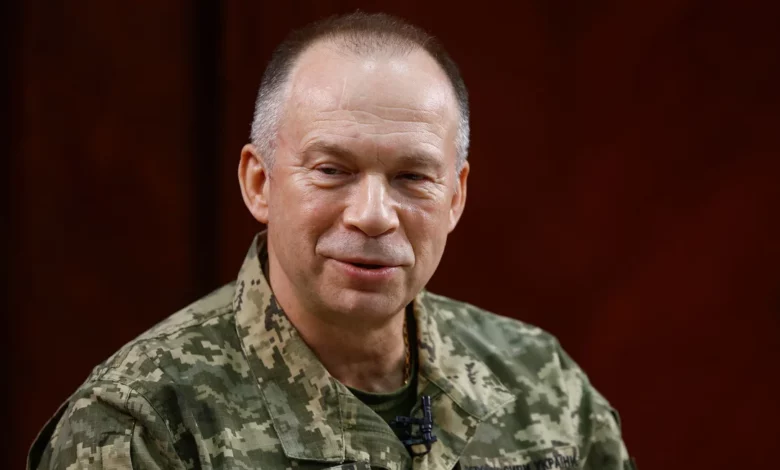
President Volodymyr Zelensky replaced General Valerii Zaluzhnyi on Thursday, after 10 days of rumor and speculation – and months of a fraying relationship.
The announcement comes at a critical moment in the war with Russia and is likely to herald a change in Ukrainian strategy. But it is also hazardous.
The removal of Zaluzhnyi from his position as commander-in-chief comes as Ukrainian units are on the backfoot in several parts of the long front line, especially in the eastern Donetsk and Kharkiv regions. They are desperately short of shells and other munitions and running short of experienced soldiers.
The Russian war machine is running at full tilt and has a much larger pool of men to draw from than Ukraine to replenish its ranks. Russia is skirting international sanctions and its oil revenues help fund plentiful war spending.
Zelensky said he and Zaluzhnyi had a “frank discussion about what needs to be changed in the army. Urgent changes.” He added that “the feeling of stagnation in the southern areas and the difficulties in the fighting in Donetsk region have affected the public mood.”
The public mood is indeed gloomier. According to a recent survey in Ukraine, those who believe that events are going in the wrong direction increased from 16% in May 2022 to 33% in December 2023.
It’s unlikely that Zaluzhnyi’s replacement, General Oleksandr Syrskyi, will offer a radical change of style but he is thought to be closer to Zelensky.
Syrskyi has been in command of land forces since the Russian invasion but was criticized for extending the defense of Bakhmut at great human cost. Subordinates have described him as lacking empathy and some soldiers took to calling him “General 200” (200 is the military code for killed-in-action.)
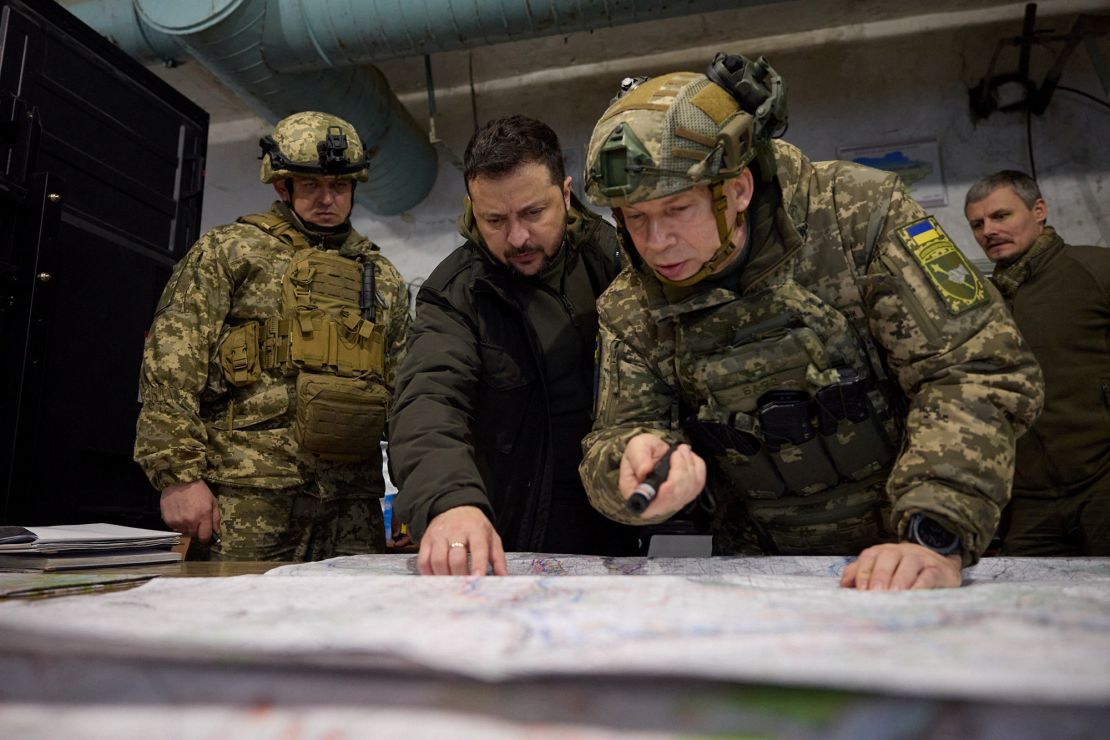
“Syrskyi is seen a consensus choice,” says Matthew Schmidt, director of the International Affairs program at the University of New Haven in Connecticut.
“Some say he’s too Soviet, meaning unimaginative but capable, some say he doesn’t take uncomfortable truths well – something Zaluzhnyi did – and some say he’s the best of the worst kind of general.”
Schmidt says there are few options right now. “Maybe it’s a phase in the war where a safe choice is the right move.”
Syrskyi’s most urgent task will be to stabilize the front lines. Also in his inbox: how to replenish the depleted ranks of some of Ukraine’s best brigades and how to expedite the arrival of Western munitions at the front lines – and how to cope until that happens.
Other priorities include: what stress to place on longer-range strikes against Russian infrastructure such as fuel depots and military bases, integrating F-16 combat aircraft into battle plans, and the rapid development of the next generation of unmanned systems.
Shortages on the frontlines
Amid persistent Russian attacks around Avdiivka and Kupyansk, “the first priority is make sure you can hold the current line of contact,” Schmidt says.

“Putin’s tactical weakness doesn’t mean he can’t kill thousands of his soldiers in an attempt to take significant chunks of territory. Any new chief of staff has to respect that risk,” he adds.
Frontline units in several vulnerable areas told CNN in recent weeks that they were often chronically short of ammunition, particularly Western 155mm artillery shells. At one gun position, troops were resupplied with smoke shells after exhausting their high-explosive ammunition, they said.
“It’s better than no shells,” one soldier said.
The head of Ukrainian Military Intelligence, Lt. Gen. Kyrylo Budanov, told CNN at the end of January that ammunition is “one of the most decisive factors” in the war.
With the Biden administration’s package of $61 billion in military aid blocked in Congress, the US has been sending smaller packages for several months, and the slowdown has already begun affecting the Ukrainian military’s planning and operations, according to US officials.
Schmidt says “the immediate priority is to get enough artillery shells to the front to keep the Russians from exploiting the pause in US aid. Each artillery shell that’s available to fire equates to needing fewer infantry to hold the line.”
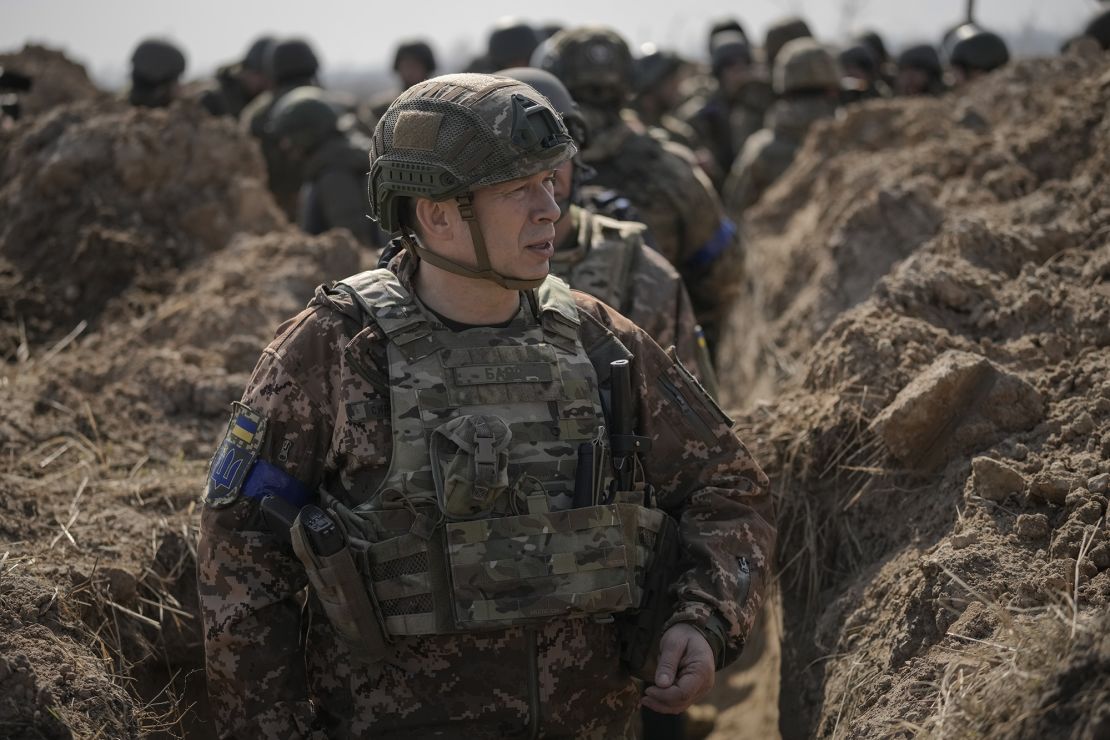
Unclogging the pipeline of US military aid and boosting European production of munitions are critical priorities if Ukraine is to move from hanging on to fighting back. The EU has acknowledged it will fall far short of its goal of producing one million artillery shells for Ukraine in the year to March, estimating the number will be roughly half of that.
This week, Ukrainian Foreign Minister Dmytro Kuleba said: “If you ask a soldier at the front what he needs most right now, he will say shells. This answer was the same yesterday, a month ago, six months ago and a year ago.”
“The main goal is to ensure that the shell shortage never turns into a shell famine,” he added.
Outnumbered
Russia’s pool of manpower is at least three times greater than that of Ukraine. Budanov told CNN that Russian forces in and near Ukrainian territory “consist of 510,000 military personnel alone.”
Ukraine’s more professional units are exhausted by two years of non-stop combat, their ranks thinned by casualties. Ukraine does not publish figures, but US officials estimate that as many as 70,000 Ukrainian soldiers have been killed and nearly twice that number injured.
The scale and speed of additional mobilization in Ukraine is a thorny political question, and one source of the rift between Zelensky and Zaluzhnyi, who said the military needed another half-million soldiers and criticized “gaps in our legislation that allow citizens to evade their responsibilities.”
In a column for CNN last week, Zaluzhnyi said: “We must acknowledge the significant advantage enjoyed by the enemy in mobilizing human resources and how that compares with the inability of state institutions in Ukraine to improve the manpower levels of our armed forces without the use of unpopular measures.”
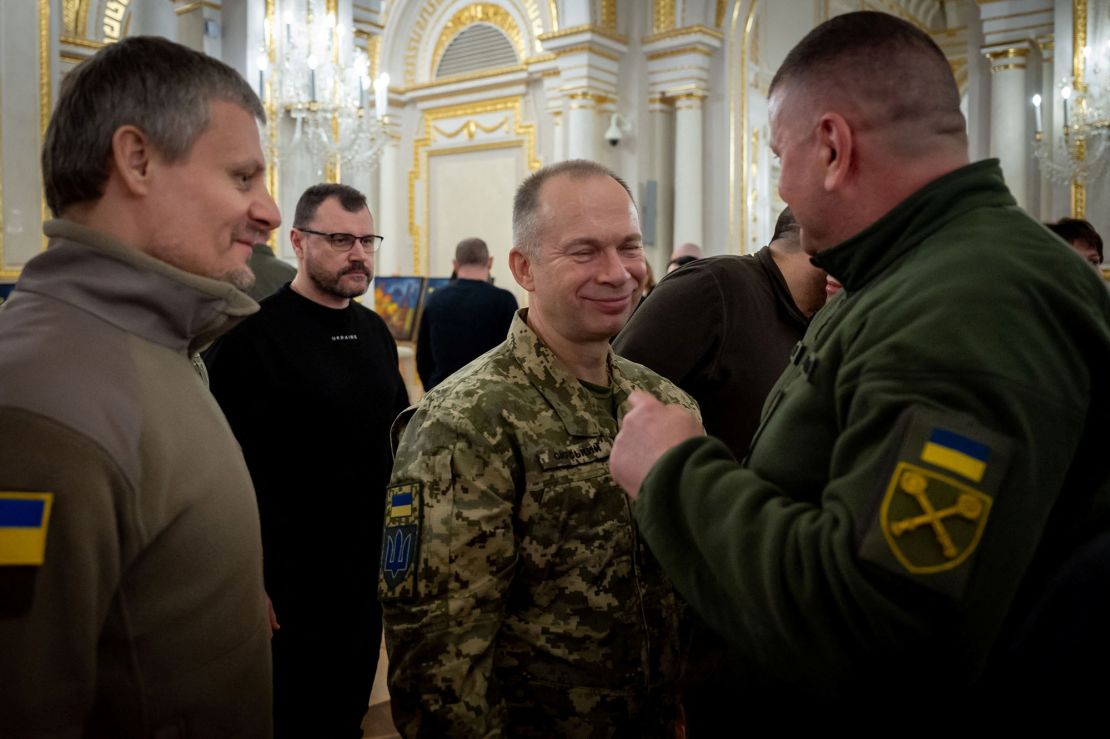
A bill passing through the Ukrainian parliament would lower the minimum age for the draft to 25 from 27 (a provision Zelensky did not sign last year) and introduce harsh punishments for people who flout mobilization rules. Citizens of military age would be obliged to carry military registration documents with them.
A more ambitious version of the bill was withdrawn amid public criticism, and it remains to be seen how effective the new measure is in addressing serious shortfalls. Zelensky is concerned about the government’s ability to pay for a larger standing army (frontline pay is six times the average Ukrainian wage at $3000 per month) and about the political risk.
“The population is still committed to the fight, we see that in opinion surveys, but they’re exhausted,” Schmidt says.
Unmanned systems
Zaluzhnyi has persistently argued that given Russia’s higher pool of manpower and armor, Ukraine needs a step-change in its battlefield technology: more sophisticated drones and other unmanned systems would provide real-time intelligence and accurate targeting information, for example.
In his recent essay Zaluzhnyi suggested that turbo-charging such investment, as well as embracing cyber technology, could produce results within five months.
Time is of the essence. The Russian military continues to make mistakes, but it is learning and adapting, especially in the exploitation of attack and reconnaissance drones and electronic warfare.
Budanov told CNN that the Russians had conducted “what you call ‘lessons learned’ and drew their own conclusions…The number of unmanned systems of all kinds, including ground-based systems and so on, has increased significantly.”
Ukrainian soldiers defending the skies around the capital, Kyiv, told CNN that the Russians were fielding new camouflage, deceptive flightpaths and engineering innovations to make their drones and missiles harder to take down.
The Russian military has also exploited glide technology to deliver aerial bombs more accurately, one reason that the Ukrainian offensive in the south faltered last summer.
Put simply, Ukraine needs to widen the technological gap, as Zelensky acknowledged in his address announcing the leadership shake-up. Its rapidly expanding domestic drone industry will be critical in that effort and is already showing results.
First person, or ‘FPV’ drones deployed in the Avdiivka area have had a devastating effect on Russian attempts to encircle the town, inflicting heavy losses on tanks and munitions vehicles. Lt. Gen. Serhii Naiev, Commander of Ukraine’s Joint Forces, says they are a “much cheaper but no less effective means of destroying enemy equipment and manpower than anti-tank missile systems and artillery ammunition.”
The introduction of F-16s, expected at the earliest this spring, should erode the Russians’ edge in the skies, but Zaluzhnyi’s stated goal of achieving absolute air superiority to enable Ukraine to go on the offensive seems a distant prospect. Meshing the new combat planes into an overall battle strategy will be a critical task for Syrskyi.
One area where the Ukrainians have been successful in recent months is in extending their attacks against Russian military infrastructure, transport links and refineries, as far away as St Petersburg and the Russian Far East.
The recent drone or UAV (unmanned aerial vehicle) strike on a refinery in Volgograd was the latest win in a series of targeted strikes.
More significant still, and despite having virtually no navy of its own, the special operations run by Budanov and the Security Service (SBU) have “allowed Ukraine to bottle up the Russian Black Sea Fleet in port…while also destroying multiple air-defense and ammunition sites in Crimea,” according to the US Naval Institute.
Ukraine has pioneered the development of maritime drones to take out several of the Black Sea Fleet’s warships. Aerial drones, missiles and sabotage operations have at least disrupted Russian logistics.
“They need to interdict Russia supply lines in Ukraine and make the Russian public feel the war in their daily lives. If Putin has to move resources to protect his rear, that means less to go on the attack with,” in Schmidt’s view.
Big shoes to fill
Over the past year, a sense of optimism among Ukraine’s allies and frontline commanders alike has given way to a darker mood, as Zelensky has acknowledged. Zaluzhnyi’s gloomy assessment in December was that “There will most likely be no deep and beautiful breakthrough,” a comment that did not endear him to the presidency.
Exhaustion at home, squabbles among allies (the EU versus Hungary) and the paralysis in Congress have added to what is a bleak outlook. Meanwhile, Russian President Vladimir Putin has been buoyed by the possibility of Donald Trump returning to the White House.
Filling Zaluzhnyi’s shoes won’t be easy.
Mick Ryan, a retired Australian general who has visited Ukraine and met with senior officials, describes him as a “charismatic and popular military leader who anticipated and prepared in the weeks before the Russian large-scale invasion.”
“He is a heroic figure – devaluing his achievements is impossible,” one soldier fighting in Zaporizhzhia told CNN.
Syrskyi has his own achievements, especially the defense of Kyiv in the early days and the lightning offensive that recovered swathes of Kharkiv in September 2022.
But the conflict has changed vastly since then.
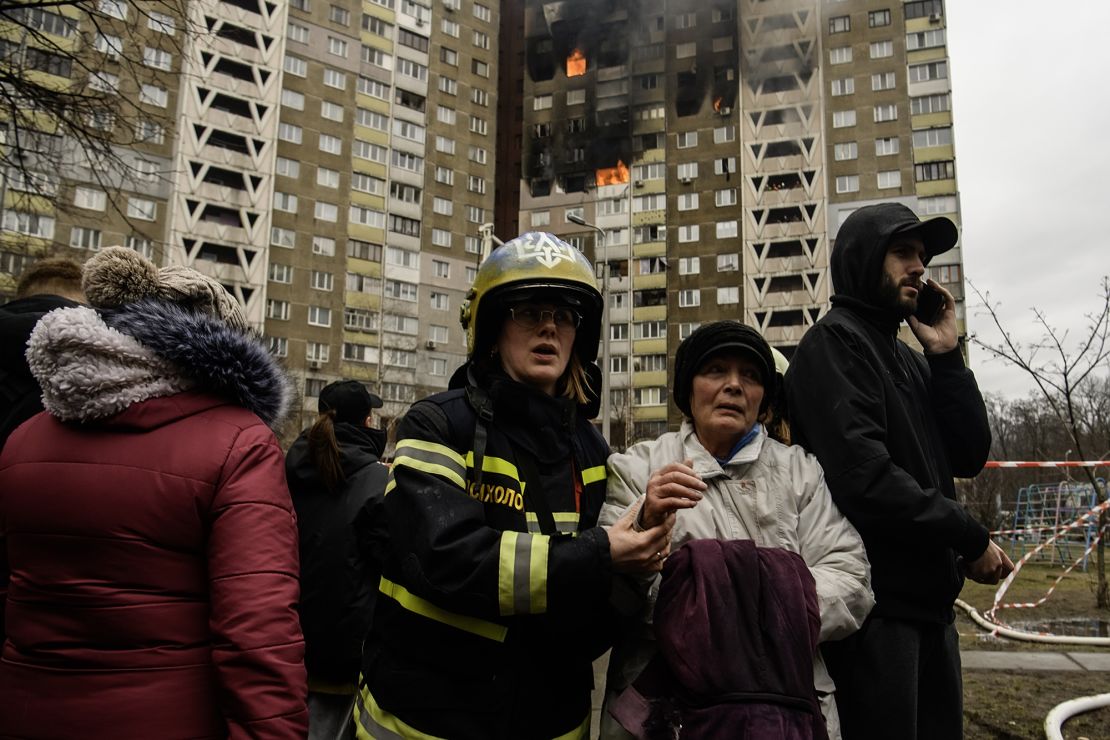
In the immediate future, the Ukrainian leadership must show unity after what has been a messy changeover. Myhailo Podolyak, an adviser to the office of the President, said that “during a war, political competition, especially at the level of the army, generals, and politicians, doesn’t look so good.”
Instilling a new sense of purpose is all the more important as Ukraine faces a window of vulnerability.
As Matthew Schmidt puts it, Putin “can throw bodies at the enemy, using Russian quantity to overcome Ukrainian quality. It’s a very Stalinist approach to the battlefield, and it’s built into Russian strategic culture.”

